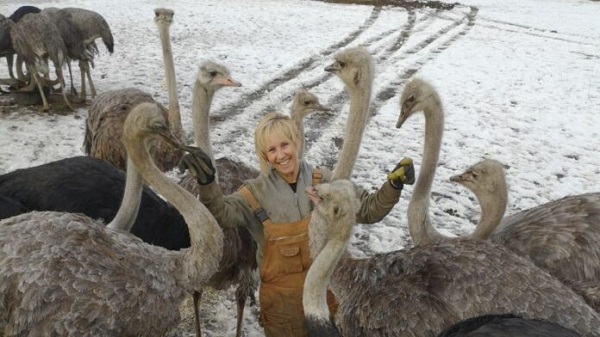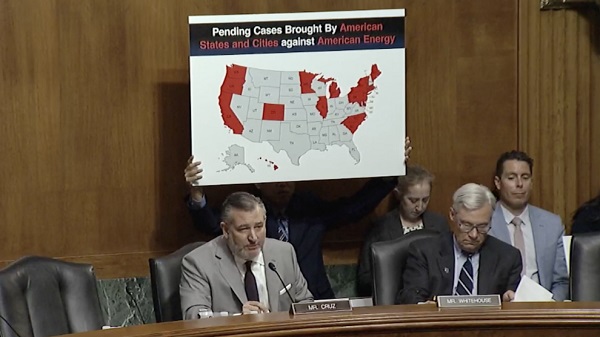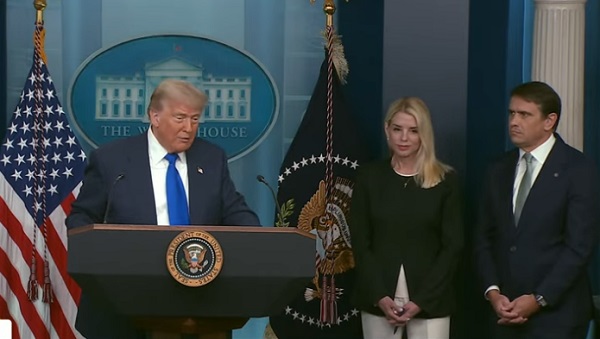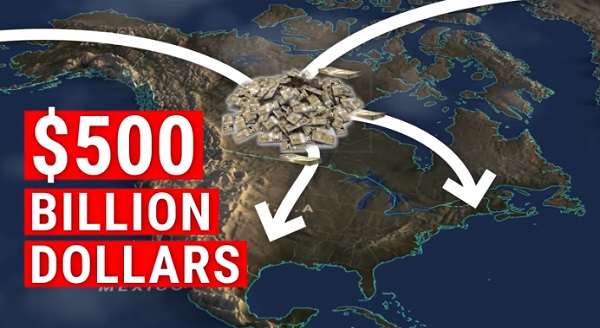Agriculture
The History of Evolution: from Darwin to DNA

History of Evolution
The Malthus Problem
Almost everyone reading this will have had somewhere between a great grandparent or great great great grandparent who was alive when Darwin went on his legendary trip to The Galapagos Islands in 1831. Many people believe that Darwin came up with the idea for evolution on that trip, but the reality is that the theory predated his birth. What Darwin is famous for is a revolutionary new way of thinking about that idea.
In 1798, Thomas Malthus (of Malthusianism fame), figured out that the productivity of agriculture also meant a rise in the birthrate. On a finite planet, he could see no way that our food supplies would be able to keep up with our increase in population. The more we had to eat the more we had children and the math was not adding up to good news.
Humanity hitting a wall of that sort was a surprise at the time, because people back then saw the world the same way a lot of people still see it today. They believed that nature was growing toward a kind of perfection, like a tree reaching for the light –with humans, like a star, right at the top. But what did it mean if food security –humanity’s greatest success– was also our greatest threat? What did it mean to be successful if success could kill you? Just what light was this tree of nature striving toward?
It was in answering that question that Darwin had his big realization.
History of Evolution
Darwin’s Genius
Most people saw evolution the same way most people today understand the idea of so-called pesticide-resistant ‘superweeds.” Most people imagine those weeds as the product of nature actively mutating around our efforts to control them. They imagine the plants intentionally changing in pursuit of survival, which means they imagined that the phrase survival of the fittest meant the ‘survival of the smartest and strongest.’
Darwin saw it for what it really was: animals and plant species sought life, but they weren’t striving to survive –they cannot imagine their future. Their subtle variances simply meant that some simply do survive. Having no foresight, all plants just do what they do, and are what they are. Sometimes their conditions are favourable to their survival and other times they are not, which is why 99.9% of species that have ever existed have gone extinct. With every species, time eventually wins.
A thirsty plant during a drought will not see its genes go forward, nor will a plant that prefers dry soils do well during rainy periods. So rather than nature being a tree, striving upward in search of ever and ever brighter light, Darwin’s big insight was that nature is simply a huge collection of lottery tickets where at least some forms of life are bound to win. And humans are not outside of that fact of nature.
While we’re all enormously alike, parents are always mixing DNA that has never been mixed before. Sometimes mutations –or the mixes themselves– create diseases or weaknesses that weaken or kill us. Other times, we are one of the few genetically lucky lottery winners to survive something like The Spanish Influenza –or, if we’re a weed, survive a farmer’s herbicide. In fact there are no super-weeds, or super-people, there are simply weeds and people that best suit the conditions they happen to be in. In the case of the aforementioned flu, the young and the old were the ones spared while often times it was those in the prime of their lives that did not survive.
Of course, winning this genetic lottery means that the surviving DNA gets to breed more of the subsequent generations. Taking that idea in the opposite direction; Darwin realized that it meant that every living thing was somehow derived from a common ancestor. This was a revolutionary idea at the time.
The churches at the time found these ideas threatening because they created a scientific form of slow-motion creation over which the church had no authority. But for science it was a slowly-evolving eureka moment. To them Darwin’s notion wasn’t dispelling creation, it was seeing it more deeply: fifty percent of the human genome is shared with bananas. That fact does feel like a miracle, and it adds a whole new meaning to the phrase, ‘we are what we eat.’
Of course none of this explained the mechanism by which nature accomplished these variations, nor could we know that the answer might resolve Malthus’s concerns about population.

History of Evolution
The Discovery of Genes
Fortunately, in the 1840’s, not long after Darwin’s trip to the Galapagos, a meticulous scientist and monk (which was common at the time), was in the Czech Republic breeding pea plants. Mendel painstakingly crossbred tens of thousands of carefully prepared plants and then just as carefully studied the results. Over time and repetition he realized that there were both dominant and recessive traits that he could predict in subsequent generations.
Mendel was the first person to even imply the idea of genes –the mechanism by which Darwin’s lottery could be held.
By 1869 we had invented technologies that would allow us to look at living things more closely. That’s when a Swiss scientist named Miescher saw something in the nuclei of cells. He even wondered if it could explain Mendel’s heredity mechanism, but at the time no one saw much value in what would come to be known as DNA and RNA.
DNA was pretty simple stuff, made from a nucleotide alphabet of only four letters. But each of our cells contains about two meters of it and we have over ten thousand trillion cells. That’s literally about 20 million kilometers or 12½ million miles of DNA in each of us! If nature’s bothering to create all of that, there’s a reason. But what? It’s only made of four nucleotides. What could you possibly create with a four letter alphabet?
History of Evolution
The Colour of Chromosomes
Chromosomes were discovered in 1888, primarily by a German named, Boveri. They got their name because they were really good at absorbing dyes, which makes them easy to see under a microscope (when a cell is dividing). Boveri linked them to the idea of heredity but it was the 1900’s before anyone else really studied them in an effective way.
Thomas Morgan is the reason why so many people associate fruit flies with science experiments. The flies bred so quickly that they were perfect for studying how chromosomes might be affecting heredity. Morgan did for the flies what Mendel did for the peas. And thanks to a mutated fly with the wrong coloured eyes, he was able to track inheritance to the point where many scientists were prepared to work from the assumption that chromosomes and DNA were in fact somehow involved in heredity.
Morgan won a Nobel Prize for his work with the flies, but even 30 years later there were still a lot of people who did not believe genes existed, or that DNA was all that important.
It was about 110 years after Darwin’s voyage on the Beagle, near the end of WWII in the 1940’s, before a brilliant Canadian named Oswald Avery managed to change a bacterium by intentionally introducing a trait from a different bacteria’s DNA. It was that experiment that very cleverly proved to everyone that DNA did in fact explain heredity –and it was so ingenious that there were many who felt Avery deserved two Nobel’s for proving it.
History of Evolution
The Shape of Things to Come
With Avery’s discovery made, the race was on to explain DNA’s structure and to understand how it does what it does. If they could figure out the shape of a DNA molecule then science had a better chance of figuring out what it was doing. At the time, it was like trying to figure out how the pieces bolted together to make a bio-machine that made…us.
Many expected the brilliant Linus Pauling to be first the one to figure it out, but maybe knowledge acted as a form of blindness in that case. The people who did find it were fairly unlikely –they had come from a background of working on military weapons. Crick of the famous Watson and Crick didn’t even have a doctorate at the time, although his effort to get one would play a key role in their discovery.
Watson was like a Doogie Howser character –a child genius who had played a role on a popular radio game show. The problem was, he wasn’t very familiar with chemistry. Yet he and Watson’s found themselves trying to figure out how that little four-letter alphabet could be assembled into life. It’s why their discovery was as surprising as it was incredible.
Maurice Wilkins shares the Nobel Prize with Watson and Crick. He is the often-forgotten New Zealander who did a lot of the less glamorous work in developing X-Ray Crystallography that lead to the ability to take images of DNA. That was clearly going to help because, at the time, everyone was following Pauling’s lead –so they were working from the assumption that the DNA molecule’s shape was a triple helix.

History of Evolution
The Woman Who Saw Things Clearly
Rosalind Franklin was the woman who figured how to actually take the pictures that Wilkins had theorized, but it was actually a student of hers (named Ray Gosling) who took the now-famous Photo 51. Gosling ended up being moved to work with Wilkins, who many feel shouldn’t have unilaterally showed Franklin’s images to Watson and Crick. But, having seen the image, they could now get their G’s C’s T’s and A’s into a double helix that led Watson and Crick to entirely re-think what they were doing.
Soon after, Franklin wrote a report on an even more detailed photo. That got passed from group leader to group leader at Cambridge until it eventually found its way to Watson and Crick. Using some impressively complex math developed for Crick’s PhD thesis, the two men now used Franklin’s measurements (without her knowledge), and they got the ‘ladder’ of the DNA lined up in such a way that it did produce the proteins that combine to form every living thing. This was an enormous eureka moment, as they say.
(You can actually help science by playing an on-line game called Fold it where you fold those resulting proteins in ways that can help science and humanity. The gamers who do so even get their work into respectable Journals like Nature.)
The reason Franklin went unmentioned for the Nobel was because applying complex math to a photo is easier than creating the complex math to apply to a photo. But had Watson, Crick and Wilkins not beat her to the solution she would have got the answer shortly thereafter, and she was the first person to realize that our DNA forms the subtle variances required to ensure our unique genetic codes.
There was a lot of sexism at the time and that likely played a role Franklin being overlooked but, in the end, even Watson –who had treated her quite badly– admitted so, and regretted that she had died shortly thereafter, preventing him from making proper amends. And of course the Nobel Prize is not given posthumously….
As for the DNA itself, once it was solved it looked easy. The verticals on the DNA ladder are a sugar, and the rungs are the nucleobases we need to make the proteins that fold together to make us. (Drug-based gene therapy is when a drug re-folds an improperly folded protein.) The rungs always have G with C, and T is always with A (unless it’s RNA, then the T is replaced with a U). It’s quite simple chemistry –if you’re a chemist.
In a much more recent development, in the spring of 2018 science was able to confirm a 1990’s theoretical discovery, meaning we also now know there is also i-motif DNA, which is a four strand knot or loop of (C)ytosine to (C)ytosine rungs. (There’s also A, Z, Triplex, Cruciform and G4 DNA shapes, but even scientists don’t know much about what’s going on with those yet, so if you can’t comprehend those you’re in extremely good company.)
After Crick, Watson, Wilkins and Franklin, the next most significant person in our understanding of DNA was the South African, Brenner. In 1960 he figured out that gene DNA is transcribed into messenger RNA in a process called transcription. The translated mRNA transports the genetic information from the cell nucleus into the cytoplasm, where it guides the production of the proteins.

By 1972 a Belgian named Walter Fiers figured out that the parts of our DNA that make the proteins are the genes, and the genes are the sections that organize the proteins to combine into everything a human being is. Shortly thereafter, Herbert Boyer, Stanley Norman Cohen and Paul Berg were the first people to intentionally transfer a gene. Their process got a bacteria to create foreign protein, essentially proving that genetic engineering was possible.
Soon after that, Marc Van Montagu and Jeff Schell found a little circular piece of DNA outside the chromosome of Agrobacterium tumefaciens. In nature it’s a bacteria that put tumors on trees, but they suspected it could also facilitate gene transfer between species in nature. By the early 80’s they had worked the Americans and the French to create the first genetically engineered plant –a variety of tobacco.
In 1974 Rudolph Jaenisch had engineered a mammal, creating the first mouse. That in turn incited a huge shift in medical research because that discovery made it possible to do experiments on exactly the same mouse over and over, which is obviously very helpful in scientific research.
Then, almost miraculously, in 1977, Carl Woese (and George E. Fox) made possibly the least-known yet most important discovery since Darwin himself, when they disproved Darwin’s notion of nature as a ‘tree of life.’ This later set Woese on a path that demonstrated the significance of Horizontal Gene Transfer. That discovery effectively saw Darwin’s ‘tree’ suddenly evolve into a bush –which demonstrated that, just as modern GMOs do, nature did and does move genes from one species to another, with the Sweet potato being a popular example. (Later, our human genome was found to be 8% virus.)
Enter Craig Venter in 2000. He and his team are the first to map the entire human genome. That same technology is now being used to map the genomes of countless plants and animals. It is through these processes that some diseases are discovered that relate to mistakes in copying the DNA code, and that lead to things like cancers.
By 2012, Jennifer Doudna and Emmanuelle Charpentier, only the second and third woman in the bunch, make maybe the most practical discovery in genetics when they figure out how to use a technology called CRISPR to get nature itself to edit or patch genetic code. This process is so natural that if we use it to create a new food it isn’t even considered genetically modified because it comes about the very same way that nature does it.
That takes us to where science is today. But this begs the question, how does DNA actually work?
History of Evolution
Cell Splits, DNA Snips and Cancer
When our cells split our 2 meters of DNA comes unzipped down the middle of the ‘ladder.’ But because it’s a code where Cs always link to G’s and T’s always link to A’s, it only takes about a second and nature has made a new piece of matching DNA and you have a whole new ‘ladder.’
We do this unzipping and recreating a lot with our colon cells because they only survive a few days; skin cells maybe a month; and like pretty much all cells, the liver cells get replaced constantly. But each individual one only replicates about once every 11-17 months. This explains why we’re often tired when we’re recovering from surgery. On top of any damage we have to repair, we have about 50-100 trillion cells and about 300 million die every minute, so it’s easy to see that our bodies are very busy.
For the most part these processes go extremely well, but it is possible to have a split go slightly wrong –that’s when a wrong letter gets in the wrong place. Biochemists call that a snip. Snips are how we get mutations that can sometimes give us cancer, and that’s why older people get more cancer. They’ve simply had more cell divisions –or more time for more splits and snips. This also explains why cancers will grow much faster in some parts of the body than in others –it depends on the rate of cell replacement.
Despite the fact that they sometimes can lead to cancer, snips are also what makes each of us just unique enough that some of us survive The Spanish Influenza pandemic while others do not. If you saw the film GATTACA, (so-named for the four nucleotides in DNA), a snip was Ethan Hawke’s advantage in the film.
Too much snipping and we die. Too little and we never evolve. Our existence literally balances between those two opposing concepts, hence our interest in genetic engineering –it’s like tipping the balance in our favour. And now we also tip it in nature’s favour too, which is why we don’t need baby cows for rennet, horseshoe crabs for the antibodies in their blood, or pigs for insulin. And, as an example, if we can get more ears of corn on a single plant, then we can leave more wild spaces for nature.

History of Evolution
Conscious Modification
Once we understood that the genes were made of chunks of DNA that simply coded for proteins, we realized that the Natives who turned teosinte grass into modern corn –about 10,000 years ago– were actually doing a valuable yet blindfolded form of genetic engineering.
On a modern level, despite the fact that Darwin had pointed out that we are all descended from one species (about 3.8 billion years ago), scientists were still surprised when they started noticing that the genes that made a mouse eye for a mouse would amazingly make a fly’s eye on a fly. Before they knew it the scientists realized they –and we– share about 60% of our code with flies! We even have the genes for a tail, that gene just isn’t switched on. It’s both unifying and humbling in a way. All life shares the same interchangeable LEGO, we just build different things with it.
Today, with the help of supercomputers, we can map out the genome of things very quickly. We can also imagine what would be created if you mixed things that haven’t mixed yet because we know what the codes actually do in the plants we improve. This means the beneficial changes created by genetic engineering could have happened in nature, but our advantage is that we do it intentionally, when otherwise a growing population could easily starve while waiting for nature to stumble onto the answers that will feed a future world.
Today’s accurate computer models also allow scientists to avoid wasting time on crops that they can figure out won’t survive, or that may be allergenic, etc. That gives them more time to develop the plants that are fit to be food. If any of these changes seems unnatural, remember, Darwin didn’t actually use the term survival of the fittest to describe evolutionary success –he simply described it as, descent through modification. Genetic engineering is merely conscious, intentional modification.
History of Evolution
Working With Nature
When a scientist makes a crop that has an insecticide ‘inside it,’ the insecticide is BT, or bacillus thuringiensis. Much like a bacteria created a sweet potato by inserting its genes into a potato, BT is a bacteria commonly found in soil that is deadly to certain bugs. It’s the very same BT that organic farmers spray on their crops because their rules mean they are barred from using the GMO BT strains that have the DNA coding to create the BT within the plant itself.
The BT in a GMO is still normal BT, but it’s a part of nature that makes very specific bug’s guts –which are alkaline, not acidic like ours– explode. That’s not dangerous for mammals for much the same reason that your mother doesn’t have to be afraid of Tiger Lilies but she should keep them away from her cat. As with dogs and chocolate, what can kill one species can be irrelevant to another. But both the BT and Tiger Lillies are natural, and BT is a great example of how science can use genetic engineering to protect beneficial insects.
Can humans make mistakes? Yes. They do so quite regularly. But on important things we do a lot of double checking, and our food has never undergone more testing, whereas nature creates random things like poisonous mushrooms etc. Fortunately, genetic engineering has been precise enough for long enough that it is now proving it can generate substantial gains for humans and our environment.
Far from being afraid of the manipulation of DNA, we should see nature as Darwin’s lottery, where nature produces mostly losing tickets. In contrast, genetic engineering permits the wildness of nature to exist while also allowing us to recognize and define the traits that farmers will need when it comes to growing the crops that will sustainably feed a growing world.
Which brings us back to Malthus and his math problem.

History of Evolution
Malthus Meets the Green Revolution
What Malthus could or did not include in his calculations were human things like genetically precise plant breeding, mechanization, The Green Revolution (created by plant hybrids and nitrogen fertilizer), as well as advances in soil science, genetic engineering, and satellite-aided precision agriculture. He also didn’t know that education would lower birthrates, which means the population will actually start dropping to a sustainable level starting somewhere between 2050 and 2100.
As recently as 1968 people like Paul Ehrlich were writing best-selling books that made Malthusian predictions that hundreds of millions of people would be starving every year by the 1980’s. That obviously didn’t happen, thanks in large part to genetic science. In fact, there are fewer starving people today than ever before, and most of those are due to war, not any failings of agriculture.
History of Evolution
A Rationally Optimistic Future
Humans cannot move forward using ignorance and fear. Our future depends on us proceeding forward with the inventiveness implied by Rational Optimism. We must be realistic, and yet at the same time we must take what we learn about nature and use it to help both ourselves and nature.
We cannot do our best for the environment, for our nutrition, or for feeding the world if we don’t use all of the tools that science has discovered on its march through time. That can be as simple as a Native American putting a fish for nitrogen on a corn seed 5,000 years ago, or a geneticist helping a plant develop drought tolerance in a lab.
In agriculture, and in life in general, humans are simply using what we know in the most productive ways we can find. Our knowledge of DNA, coupled with the love of nature that lead to the existence of the sciences, will be absolutely key to us succeeding in sustainably feeding a growing planet.
Note: If you would like a short shareable video version of this article it can be found here.
Read more stories on Todayville Edmonton.
Agriculture
Unstung Heroes: Canada’s Honey Bees are not Disappearing – They’re Thriving

Canada’s Bee Apocalypse began in 2008. That was the year the Canadian Association of Professional Apiculturists (CAPA) first reported unusually high rates of winter bee colony losses. At 35 percent, the winter die-off that year was more than twice the normal 15 percent rate of attrition.
“Successive annual losses at [these] levels … are unsustainable by Canadian beekeepers,” the CAPA warned. This set off an avalanche of dire media reports that now appear on a regular basis. Among the many examples over the years: Huge Honey Bee Losses Across Canada” and “Canada’s bee colonies see worst loss in 20 years”. As each of these stories reminds readers, the disappearance of honey bees will doom our food supply, given their crucial role in pollinating crops including canola, soyabeans, apples, tomatoes and berries.
This year the black-and-yellow striped Cassandras are back at work, with headlines shouting “Scientists warn of severe honeybee losses in 2025” and “The Bees are Disappearing Again”. If it’s spring, the bees must be disappearing. Again.
It is, however, mathematically impossible for any species to be in an allegedly continuous and calamitous state of decline over nearly two decades and never actually reduce in number. For despite the steady supply of grave warnings regarding their imminent collapse, Canada’s bees are actually buzzing with life.
In 2007, according to Statistics Canada, there were 589,000 honey bee colonies in Canada,; in 2024, they reached 829,000, just shy of 2021’s all-time high of 834,000. Figuring a conservative summertime average of 50,000 bees per colony, that means there are approximately 12 billion more honey bees in Canada today than when the Bee Apocalypse first hit.
As for beekeepers, their numbers have also been growing steadily, and now stand at 15,430 – the most recorded since 1988. As CAPA’s report acknowledges, “the Canadian beekeeping industry has been resilient and able to grow, as proven by the overall increase in the number of bee colonies since 2007 despite the difficulties faced every winter.”
How is this possible? As is usually the case where there’s a need to be filled, the market holds the answer.
It is true that Canadian honey bees face a long list of threats and challenges ranging from mites and viruses to Canada’s harsh winters. It is also true that they perform a crucial service in pollinating crops, the value of which is estimated at $7 billion annually. However, this underscores the fact that bees are a livestock bred for a particular agricultural purpose, no different from cattle, chickens or pen-raised salmon. They are a business.
And in spite of its alleged status as an environmental totem, the honey bee isn’t even native to North America. It was first imported by European settlers for its honey-making abilities in the 1600s. Since then, it has been cultivated with deliberate commercial intent – allowing it to outcompete native pollinators such as bumble bees and butterflies even though it is poorly suited to the local winter. (This highlights the irony of all those native-plant pollinator gardens virtuously installed in neighbourhoods across Canada that end up supporting an invasive honey bee population.)
The significance of the bee economy means that when a beehive collapses over the winter for whatever reason, beekeepers have plenty of motivation to regenerate that colony as swiftly as possible. While hives can create their own queens over time, this can be a slow process given the cold Canadian climate. The better option is to simply buy a new queen from a warmer country.
In 2024, Canada imported 300,000 queens worth $12 million, mostly from the U.S., Italy, Australia and Chile. That works out to $40 each. In a miracle of nature, each of these new queens can lay up to 2,500 eggs a day, and each egg takes just two to three weeks to reach full maturity as a worker or drone. It is also possible to import entire “bee packages” that include a queen and 8,000 to 10,000 bees.
As a result, even a devastating 50 percent winter loss rate, something that has occurred only rarely in Canada in individual provinces and never nationally, isn’t necessarily fatal to any beekeeping operation. The beekeeper can purchase imported queens in April, split their existing colonies and be back in business by May or June.
And regardless of the honey bee’s apparent difficulties with Canada’s unforgiving weather (efforts are ongoing to breed a hardier Canadian variant), there’s no shortage of bees worldwide. Earlier this year, the German statistical agency reported the global beehive count rose from 69 million in 1990 to 102 million in 2023. Another study looking back to 1961 by New Zealand researchers found the number of honey bee colonies has “nearly doubled” over this time, while honey production has “almost tripled.” As the New Zealand report observes, “Headlines of honey bee colony losses have given an
impression of large-scale global decline of the bee population that endangers beekeeping, and that the world is on the verge of mass starvation.” Such claims, the authors note, are “somewhat inaccurate.” In truth, things have never been better for bees around the world.
Here in Canada, the ability to import queens from other countries, together with their prodigious reproductive capabilities, backstops the amazing resiliency of the bee industry. Yes, bees die. Sometimes in large numbers. But – and this is the bit the headlines always ignore – they come back. Because the market needs them to come back.
If there is a real threat to Canada’s bee population, it’s not environmental. It’s the risk that unencumbered trade in bees might somehow be disrupted by tariffs or similar bone-headed human interventions. Left on their own, bees have no problem keeping busy.
The longer, original version of this story first appeared at C2CJournal.ca
Agriculture
Canada Greenlights Mass Culling of 400 Research Ostriches Despite Full Recovery from Bird Flu Months Ago

 Nicolas Hulscher, MPH
Nicolas Hulscher, MPH
Federal court upholds CFIA’s reckless cull order—setting a dangerous precedent for the unscientific mass depopulation of genetically important animals.
In March, I interviewed Katie Pasitney of Universal Ostrich and Connie Shields to discuss the alarming implications of the Canadian Food Inspection Agency (CFIA) order to cull 400 research ostriches at Universal Ostrich Farm in British Columbia over bird flu:
Canada Orders Mass Culling of 400 Research Ostriches Over Bird Flu, Refuses to Test Surviving Birds for Natural Immunity
·The Canadian Food Inspection Agency (CFIA) has ordered the culling of 400 ostriches at Universal Ostrich Farm in British Columbia, citing concerns over H5N1 bird flu. However, this decision is not based on sound science and could have serious consequences for both food security and medical research.
Universal Ostrich Farm is a research facility focused on studying the unique antibody-producing capabilities of ostriches. Their research has demonstrated potential in neutralizing viruses, bacteria, and even COVID-19, making it an important contribution to medical science.
In December 2024, the CFIA claimed that two deceased ostriches—which had been lying outside for over 16 hours—tested positive for H5N1 via PCR testing. Just 41 minutes after receiving these results, the CFIA signed an order to cull the entire flock.
The CFIA initially granted the farm an exemption, recognizing the birds as “genetically important.” Later, without clear justification, they reversed this decision, ordering their destruction.
Despite the importance of this research, the CFIA has refused to conduct further testing on the birds and has banned the farm from conducting its own tests, under threat of heavy fines and possible imprisonment. Why is the Canadian government refusing to study the potential antibodies ostriches have developed against H5N1 bird flu?
On January 31, 2025, a court granted a temporary stay of execution, halting the cull. However, the CFIA is appealing this decision, which means the culling could still proceed.
Today, we have received news that the reckless mass cull order will proceed despite their ostriches having already recovered months ago and developed natural immunity against H5N1:

Official Announcement: Federal Court Decision in Universal Ostrich Farms Inc. v. Canadian Food Inspection Agency
Dear friends and supporters,
We are absolutely devastated to share today’s Federal Court decision, issued on May 13, 2025. The court ruled in favour of the Canadian Food Inspection Agency (CFIA), upholding their order to destroy our beloved ostriches and rejecting our plea to save them.
The court’s decision accepted the CFIA’s justification under the Health of Animals Act and their use of the Stamping-Out Policy, which mandates the destruction of animals to control disease outbreaks, regardless of their health status. The court confirmed the CFIA’s approach, prioritizing trade obligations over the welfare of our animals.
In addition, we’ve been ordered to pay $15,000 in CFIA’s legal costs. You can read the full decision here: (2025 FC 878). https://saveourostriches.com/wp-content/uploads/2025/05/JR-T-294-25-and-T-432-25-Final.pdf
We are heartbroken by this outcome and uncertain about the future of our farm. As we navigate this incredibly difficult time, we ask for your patience and continued support. If you are able, please consider making a donation to help us manage the financial and emotional toll this has taken.
Thank you,
Universal Ostrich Farm
http://SaveOurOstriches.com
This deeply misguided decision sets a dangerous precedent for the Canadian government to recklessly depopulate animals at will.
By upholding the CFIA’s reckless cull order, despite the ostriches’ recovery and natural immunity, the court has prioritized trade protocols over scientific inquiry, animal welfare, and the advancement of life-saving medical research.
Epidemiologist and Foundation Administrator, McCullough Foundation
www.mcculloughfnd.org
Please consider following both the McCullough Foundation and my personal account on X (formerly Twitter) for further content.
-

 Brownstone Institute2 days ago
Brownstone Institute2 days agoFDA Exposed: Hundreds of Drugs Approved without Proof They Work
-

 Energy1 day ago
Energy1 day agoChina undermining American energy independence, report says
-

 Automotive1 day ago
Automotive1 day agoPower Struggle: Electric vehicles and reality
-

 Business1 day ago
Business1 day agoTrump on Canada tariff deadline: ‘We can do whatever we want’
-

 Automotive1 day ago
Automotive1 day agoElectric vehicle sales are falling hard in BC, and it is time to recognize reality.
-

 Business1 day ago
Business1 day agoEurope backs off greenwashing rules — Canada should take note
-

 Business7 hours ago
Business7 hours agoCanada Caves: Carney ditches digital services tax after criticism from Trump
-

 Crime7 hours ago
Crime7 hours agoSuspected ambush leaves two firefighters dead in Idaho









You must be logged in to post a comment Login